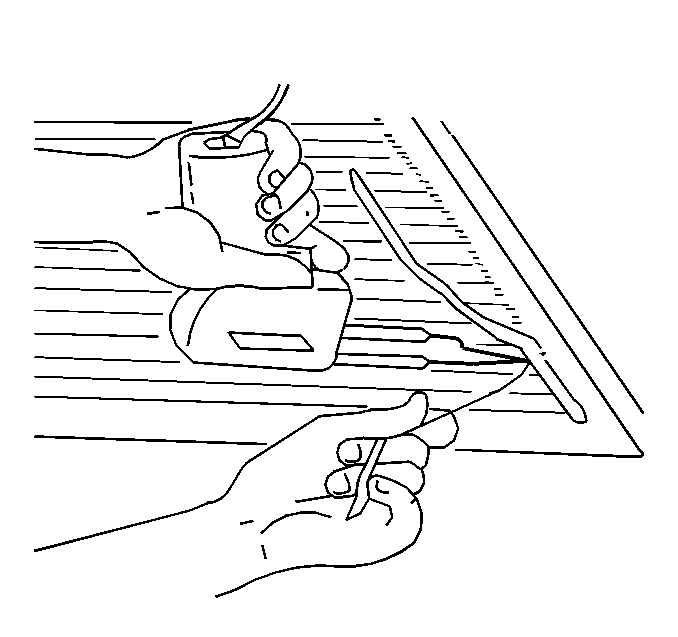- Buff the repair area with fine steel wool. This removes the oxide
coating formed during window manufacture.
- Using a brush, apply a paste-type rosin flux in small quantities
to the lead wire antenna of the rear defogger bus bar and the defogger terminal
repair area.
- Coat the iron tip with solder. Use only enough heat to melt the
solder and only enough solder to ensure a complete repair.
- Solder to the feed bus bar or the ground bus bar.
Draw the soldering iron tip across the fluxed area, thinly coating the
bus bar with solder.
- Add a small amount of flux to the underside of the lead wire of
the rear defogger bus bar, the antenna, and the defogger terminal.
| • | Align the spots with flux to the underside of the lead wire antenna
of the rear defogger bus bar and the defogger terminal. |
| • | Coat the tip of the soldering iron with solder. |

- Solder to the underside
of the lead wire antenna of the rear defogger bus bar and the
defogger terminal.
Draw the soldering iron tip across the fluxed area, thinly coating the
bus bar with solder.
Draw the soldering iron across the fluxed spot, thinly coat the spot
with solder.
- Solder the spot on the braid against the spot on the feed bus
bar or the ground bus bar.
| | Important: Do not overheat the terminal when you resolder the terminal to the bus
bar. The soldering iron tip temperature should be just enough to melt the
solder and allow it to run freely. The iron should be in contact with the
bus bar for as short a time as possible.
|
| • | Apply heat to the top of the rear defogger bus bar lead wire antenna
and/or defogger terminal, causing the solder spot to melt and fuse together. |
| • | Use pliers to hold the rear defogger bus bar lead wire, the antenna,
and the defogger terminal. |
| • | Holding force should not be removed until the solder has solidified. |
- Wipe off the excess flux with solvent.
- Connect the electrical connector.

